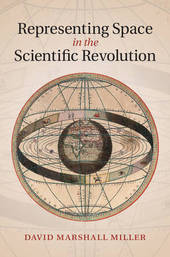
|
Representing Space in the Scientific Revolution
Hardback
Main Details
| Title |
Representing Space in the Scientific Revolution
|
| Authors and Contributors |
By (author) David Marshall Miller
|
| Physical Properties |
| Format:Hardback | | Pages:246 | | Dimensions(mm): Height 234,Width 160 |
|
| Category/Genre | Western philosophy - c 1600 to c 1900
History of science
Astronomy, space and time |
|---|
| ISBN/Barcode |
9781107046733
|
| Classifications | Dewey:520.9032 |
|---|
| Audience | | Professional & Vocational | |
|---|
| Illustrations |
21 Line drawings, black and white
|
|
Publishing Details |
| Publisher |
Cambridge University Press
|
| Imprint |
Cambridge University Press
|
| Publication Date |
7 August 2014 |
| Publication Country |
United Kingdom
|
Description
The novel understanding of the physical world that characterized the Scientific Revolution depended on a fundamental shift in the way its protagonists understood and described space. At the beginning of the seventeenth century, spatial phenomena were described in relation to a presupposed central point; by its end, space had become a centerless void in which phenomena could only be described by reference to arbitrary orientations. David Marshall Miller examines both the historical and philosophical aspects of this far-reaching development, including the rejection of the idea of heavenly spheres, the advent of rectilinear inertia, and the theoretical contributions of Copernicus, Gilbert, Kepler, Galileo, Descartes, and Newton. His rich study shows clearly how the centered Aristotelian cosmos became the oriented Newtonian universe, and will be of great interest to students and scholars of the history and philosophy of science.
Author Biography
David Marshall Miller is Assistant Professor of Philosophy at Iowa State University. He has published articles in journals including Philosophy of Science and History of Science.
Reviews'In this exciting new study, Miller argues that the Scientific Revolution depended crucially on the adoption of an oriented representation of space, privileging parallel lines instead of centers. From this novel perspective he throws fresh light on the disparate contributions of Averroes, Gilbert, Kepler, Galileo, Descartes, Fermat, Roberval, Hooke and Newton. Highly recommended for all those with an interest in the birth of modern cosmology.' Richard T. W. Arthur, McMaster University, Ontario
|